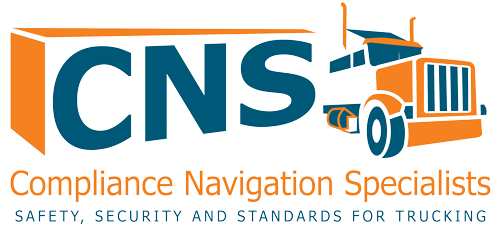Nearly 14% of FMCSA Workforce Accepts Resignation Offers Amid Broader DOT Staff Cuts

In a sweeping federal workforce reduction effort, nearly 14% of the Federal Motor Carrier Safety Administration (FMCSA) staff are scheduled to exit their roles by the end of Fiscal Year 2025. This reduction is part of a broader initiative by the Trump Administration aimed at downsizing the federal government.
According to a recent Politico report, 169 FMCSA employees—13.7% of the agency’s total workforce—have accepted Deferred Resignation Program (DRP) offers, which allow employees to continue receiving pay and benefits through September 30, 2025, in exchange for agreeing to resign.
FMCSA Not Alone in Deep Cuts
The FMCSA is just one of many sub-agencies within the U.S. Department of Transportation (USDOT) facing significant staffing changes. Across the entire department, 4,127 of the 56,989 employees (7.2%) accepted early departure offers. However, some sub-agencies are seeing far more dramatic losses:
- Federal Transit Administration (FTA): 32.7% reduction
- National Highway Traffic Safety Administration (NHTSA): 27.8%
- Federal Highway Administration (FHWA): 26%
- Federal Railroad Administration (FRA): 14%
- FMCSA: 13.7%
- Pipeline and Hazardous Materials Safety Administration (PHMSA): 13.1%
- Office of the Secretary of Transportation: 16%
While the Federal Aviation Administration (FAA), the largest sub-agency with more than 46,000 workers, is losing just 4.5% of its staff, the cumulative impact on agencies responsible for highway, transit, and commercial vehicle safety is far more pronounced.
What Is the DRP and Why Now?
The DRP—or Deferred Resignation Program—is part of a broader “Fork in the Road” federal initiative where roughly 2 million federal workers were given the option to resign with extended compensation. The Trump Administration has framed the move as a necessary step to trim what it views as an oversized federal workforce and refocus government agencies on efficiency and results.
Transportation Secretary Sean Duffy hinted at further adjustments:
“If we have bloat in certain areas, we’ll reduce force… There might be certain areas we have to rehire back into and we’ll do that.”
The Impact on FMCSA’s Mission
The FMCSA’s core mission is to reduce crashes, injuries, and fatalities involving large trucks and buses—a critical public safety role in a country where trucks haul more than 70% of freight and were involved in over 5,200 fatal crashes in 2022 alone.
Despite operating more like a small corporation than a bloated bureaucracy, FMCSA’s loss of nearly 14% of its workforce raises concerns about its ability to continue delivering key safety and modernization initiatives, including:
- The Split Sleeper Berth Pilot Program
- Investments in truck parking infrastructure
- Modernizing the DataQs System
- Improving the National Consumer Complaint Database
- Advancing CSA safety score reform
With fewer employees, these initiatives may slow down or stall altogether—impacting not only driver safety, but also carrier compliance, enforcement precision, and regulatory responsiveness.
Related Article: A Breakdown of FMCSA’s Organizational Structure
While critics often argue that FMCSA is overly regulatory and inefficient, proponents highlight its role in preventing loss of life and ensuring economic stability through responsible oversight of the $800-billion trucking industry.
In fact, FMCSA has increasingly adopted data-driven, adaptive regulation, including recent HOS flexibility updates, ELD refinements, and pilot programs to test smarter enforcement methods.
What Happens Next?
Although these DRP acceptances won’t formally take effect until the end of FY2025, the looming vacancies will likely begin to influence FMCSA’s operations this year, as employees prepare to transition out and knowledge gaps emerge.
The agency may need to reassess staffing models, reprioritize programs, and rely more heavily on automation, outsourcing, or industry partnerships to maintain service levels.
Transportation and trucking industry leaders will be watching closely. Any dip in regulatory enforcement, delays in rulemaking, or confusion over compliance support could ripple through the supply chain—especially at a time when the industry is already grappling with high turnover, freight volatility, and infrastructure shortages.
Want DOT Regulatory help?
At CNS, our DOT Compliance Programs focus on Proactive Safety Management® (PSM), a mindset that will ensure your fleet’s safety and compliance is always in order and ahead of the FMCSA.
Our PSM Motor Carrier Program includes:
- ELD management
- Driver Qualification File Management
- New driver on-boarding
- Driver safety meetings
- CSA score management
- Policies and handbooks
- Vehicle maintenance
- and more
Or, even better, these programs can be customized to fit your company’s needs! To learn more, fill out the form below or contact us at 888.260.9448 or info@cnsprotects.com and we would be glad to help.
Questions about DOT Compliance, Licensing, Audits, Programs, etc.?
Our DOT Specialists are here to help!
What are you searching for?
Is DOT Compliance your Top Priority?
Our DOT Compliance Programs ensure it is your top priority and keeps your business running.
Related Services
Subscribe to our Monthly Newsletter
Receive the latest transportation and trucking industry information about FMCSA and DOT Audits, Regulations, etc.
Related news
Trucking News
Get the latest trucking news on DOT Compliance, Licensing, Audits, and more!

Is California Enforcing AB5 Against Trucking Companies?
What Fleets Need to Know After the First Major Enforcement Case Summary: For years, California’s independent contractor law — AB5 — has loomed over the

A Complete Guide to CDL Endorsements and Restrictions for Non-Trucking Companies
Hiring in 2026? Make sure you’re hiring qualified drivers who have all the right licensure and endorsements to operate your company’s vehicles. If your company

Legal Work Status and DQ Files: How to Verify a Driver’s Legal Right to Work in the U.S.
Driver shortages are leading more carriers to consider immigrant CDL applicants—but not all are vetted equally. Learn how to verify work eligibility and document it
